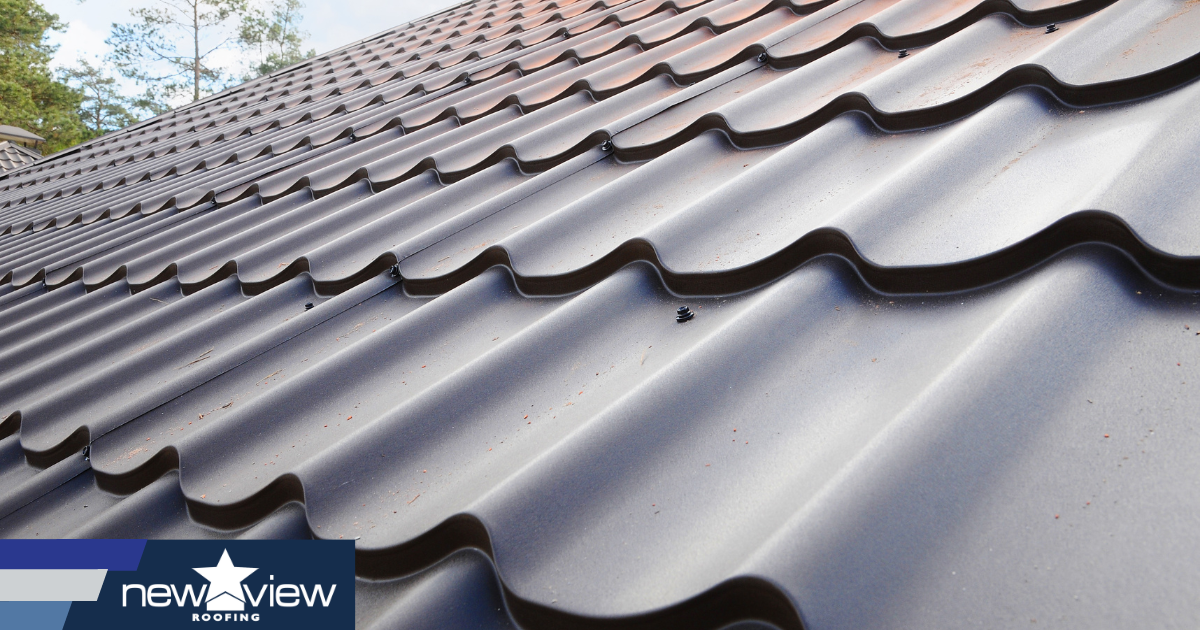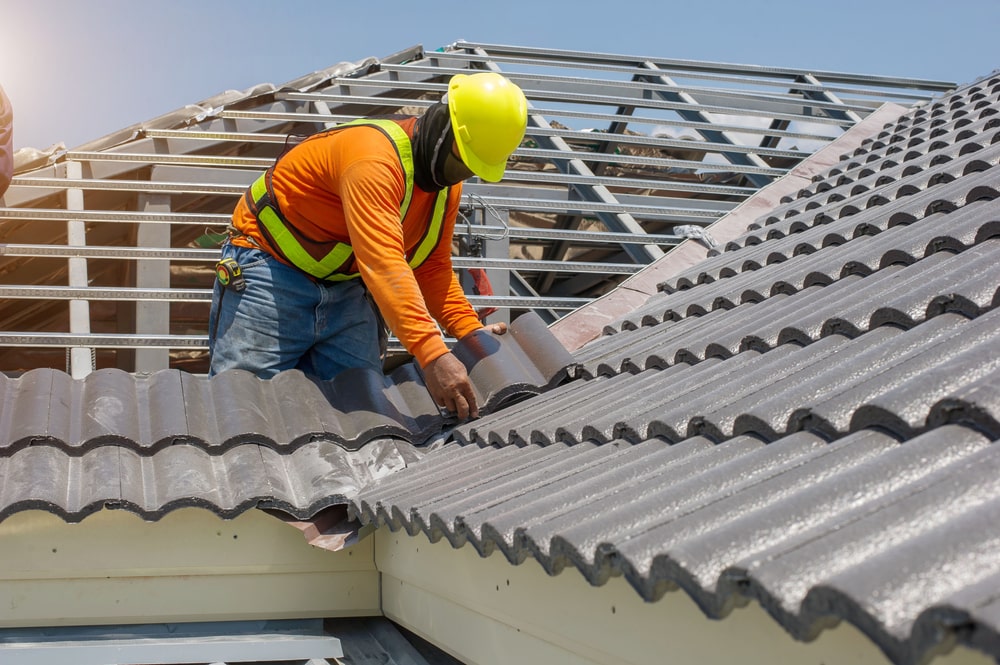A Comprehensive Check Out Roofing Companies Gainesville Residents Recommend
A Comprehensive Check Out Roofing Companies Gainesville Residents Recommend
Blog Article
Ideal Practices for Ensuring Proper Roof Air Flow
A well balanced intake and exhaust air vent proportion, generally 1:300, plays a crucial duty, with intake vents preferably put at the reduced edge of the roof for trendy air entrance and exhaust vents at the peak for cozy air exit. Maintaining insulation away from vents is critical to protect against air movement constraint.
Understand Air Flow Fundamentals
Effectively recognizing ventilation fundamentals is important for guaranteeing the longevity and performance of roof. Effective air flow minimizes dampness build-up and temperature extremes in the attic, both of which can bring about significant architectural damages with time. A well-ventilated roofing system aids in stopping typical problems such as mold development, timber rot, and ice dams, which can compromise the integrity of the roofing products and the underlying structures.
The key objective of air flow is to assist in the motion of air, permitting a constant exchange between the exterior and indoor settings. This balance is attained via a combination of intake and exhaust vents that interact to preserve optimum airflow. Intake vents, generally located along the soffits or eaves, permit fresh air to go into the attic room room, while exhaust vents, often located at or near the roof covering ridge, make it possible for warm, humid air to leave.
Trick elements affecting the efficiency of roofing ventilation include appropriate positioning, adequate sizing, and ensuring that both intake and exhaust vents are unhampered. Normal examination and maintenance are crucial to recognize prospective clogs, damage, or inefficiencies in the ventilation system, therefore safeguarding the roofing's performance and durability.
Kinds Of Roof Vents
Roof covering vents play a critical role in keeping effective attic room air flow and, by expansion, the total health of the roof covering system. Various types of roofing vents are readily available, each with special advantages customized to certain roof demands.

Soffit vents are mounted under the eaves and job in tandem with roof vents to guarantee a balanced intake and exhaust system. By enabling cooler air to enter from below, soffit vents promote the expulsion of warm air with top vents. Gable vents, located on the outside walls of the attic, deal one more efficient remedy, especially in homes with saddleback roofs.
Examine Your Present Ventilation

Next, take into consideration the age and problem of your roof materials and air flow elements. Older systems might not abide by current building ordinance or may have weakened with time, decreasing their performance. Conduct a detailed exam to identify any type of signs of damage, such as corrosion, damage, or voids that might endanger the system's performance.
Additionally, measure the attic temperature level and moisture levels. High temperatures and humidity can show inadequate ventilation.
Installation Best Practices
Reliable installation of roof covering air flow systems is critical for guaranteeing optimum performance and long life. Proper installation begins with recognizing the particular air flow demands of the structure and the roof it covers. This entails computing the appropriate proportion of consumption to exhaust vents, typically adhering to the 1:300 guideline, which stipulates one square foot of air flow for every single 300 square feet of attic room flooring space.

Intake vents ought to be set up at the roof's lower side, often in the soffits, to permit trendy air to get in. Exhaust vents, on the other hand, need to be mounted near or at the roofing system's height to facilitate the exit of cozy, moist air.
Seal all air vent links meticulously to stop air leakages and potential water infiltration. Usage high-grade materials and follow supplier guidelines to make sure sturdiness and efficiency. Additionally, integrating ridge vents with baffles can dramatically boost read the article air movement performance by stopping wind-driven rainfall and snow from going into the attic.
Ultimately, specific installment of roof covering ventilation systems reduces prospective problems such as mold and mildew growth, ice dams, and structural damage, making certain the roofing system's honesty and the structure's total health and wellness.
Regular Maintenance Tips
Consistency in maintenance practices is fundamental to making sure the lasting effectiveness of roof covering ventilation systems. Throughout these assessments, guarantee that vents are cost-free of particles, nests, and various other blockages that could hamper air movement.
Make use of a soft brush or a vacuum to eliminate dust and particles from consumption and exhaust vents. Be cautious not to harm the vent displays or louvers throughout the process.
Appropriate insulation is similarly essential. Ensure that attic room insulation does not block the vents, as this can seriously limit air movement. Rearrange or replace it to keep a reliable Resources barrier. if any type of insulation has changed or settled.
Last but not least, change any kind of damaged or missing out on components promptly. Busted vents, split roof shingles, or deteriorated blinking can all add to insufficient air flow and must be addressed right away. Normal upkeep guarantees that the roof air flow system functions ideally, therefore extending the life expectancy of the roofing system itself.
Conclusion
Guaranteeing appropriate roof covering ventilation is vital for keeping the performance and longevity of a roof. Adherence to the 1:300 consumption and exhaust vent proportion, coupled with the tactical positioning of vents, is crucial. Routine semiannual assessments, particles cleansing, and ensuring insulation does not block airflow are critical techniques. Carrying out these ideal methods will certainly promote a well-ventilated roof, thus mitigating possible concerns connected to moisture build-up and too much warmth, eventually lengthening the roofing's life expectancy.
A balanced consumption and exhaust vent ratio, frequently 1:300, plays an essential function, with intake vents ideally placed at the lower edge of the roof covering for amazing air access and exhaust vents at the peak for cozy air leave. Consumption vents, generally situated along the soffits or eaves, enable fresh air to get in the attic room, while exhaust vents, frequently positioned at or near the roof ridge, enable hot, damp air to run away.
Soffit vents are mounted under the eaves and job in tandem with roofing system vents to guarantee a balanced intake and exhaust system. By permitting cooler air to get in from below, soffit vents help with the expulsion of warm air through top vents. Adherence to the 1:300 intake and exhaust vent ratio, paired with the calculated placement of vents, is necessary.
Report this page